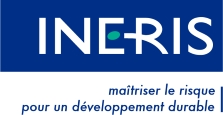The last decade has seen an increased focus on evaluating the safety and sustainability of chemicals in consumer and industrial products. In order to effectively and accurately evaluate safety and sustainability, tools are needed to characterize hazard, exposure, and risk pertaining to products and processes. Because many of these tools will be used to identify problematic chemistries, and because many have potential applications in various steps of an alternatives analysis, the limitations and capabilities of available tools should be understood by users so that, ultimately, potential chemical risk is accurately reflected. In our study,we examined 32 chemical characterization tools from government, industry, academia, and non-governmental organizations (NGOs). The tools we studied were diverse, and varied widely in their scope and assessment.
As such, they were separated into five categories for comparison: 1) Screening and Prioritization; 2) Database Utilization; 3) Hazard Assessment; 4) Exposure and Risk Assessment; and 5) Certification and Labeling. Each tool was scored based on our weighted set of criteria, and then compared to other tools in the same category. Ten tools received a high score in one or more categories; 24 tools received a medium score in one or more categories, and five tools received a low score in one or more categories. Although some tools were placed into more than one category, no tool encompassed all five of the assessment categories. Though many of the tools evaluated may be useful for providing guidance for hazards – and, in some cases, exposure – few tools characterize risk. To our knowledge, this study is the first to critically evaluate a large set of chemical assessment tools and provide an understanding of their strengths and limitations. Integr Environ Assess Manag 2015;11:242–255. © 2014 SETAC.
Article Chemical Assessment State of the Science: Evaluation of 32 Decision-Support Tools used to Screen and Prioritize Chemicals
Publié le 14/11/2016
Auteur:
Cardno ChemRisk - Tkingsbury
Année de publication:
2014
Type de source:
Académique
Description:

